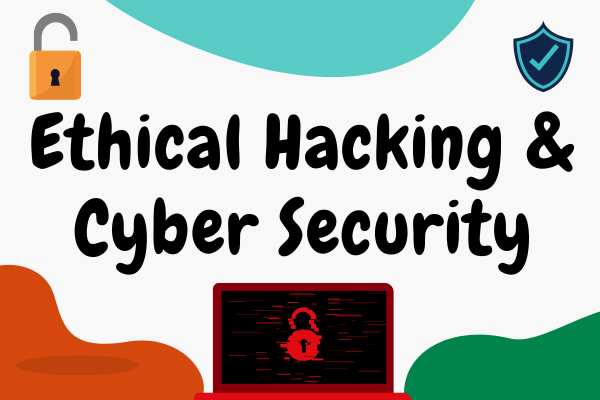Data Center Virtualization is a technology that allows multiple virtual instances of servers, storage, and networking to be created on a single physical hardware platform. This approach enhances the efficiency, scalability, and management of data centers by abstracting and pooling physical resources to create a more flexible and agile IT environment.
Key Components of Data Center Virtualization
- Server Virtualization:
- Hypervisors: Software or firmware that creates and manages virtual machines (VMs) on a physical server. Common types are Type 1 (bare-metal) hypervisors (e.g., VMware ESXi, Microsoft Hyper-V) and Type 2 (hosted) hypervisors (e.g., VMware Workstation, Oracle VirtualBox).
- Virtual Machines (VMs): Isolated instances that run their own operating systems and applications, sharing the underlying physical server resources.
- Storage Virtualization:
- Virtual Storage Arrays: Abstract and aggregate storage resources from multiple physical storage devices into a single pool.
- Storage Area Network (SAN): A dedicated network that provides access to consolidated, block-level storage, enhancing storage management and scalability.
- Network Virtualization:
- Virtual LANs (VLANs): Segment physical networks into multiple logical networks, providing improved network isolation and security.
- Software-Defined Networking (SDN): Centralizes network control and management, enabling dynamic and automated network provisioning and configuration.
- Compute Virtualization:
- Resource Pools: Aggregate CPU, memory, and other resources from multiple servers into pools that can be dynamically allocated to VMs based on demand.
- Cloud Management Platforms: Tools and platforms (e.g., VMware vCloud, OpenStack) for managing virtualized resources and automating provisioning, scaling, and orchestration.
- Management and Automation:
- Virtualization Management Tools: Software solutions that provide visibility, control, and automation for managing virtualized environments (e.g., VMware vCenter, Microsoft System Center).
- Orchestration and Automation: Automate routine tasks, workflows, and resource allocation to streamline data center operations and improve efficiency.
Benefits of Data Center Virtualization
- Resource Optimization:
- Maximize utilization of physical hardware by running multiple virtual instances on a single physical server, reducing hardware costs and increasing efficiency.
- Scalability and Flexibility:
- Quickly provision and scale virtual resources based on demand, enabling rapid response to changing business needs and workloads.
- Improved Disaster Recovery:
- Simplify disaster recovery and business continuity by leveraging features like VM snapshots, cloning, and replication to ensure quick recovery of virtualized environments.
- Cost Savings:
- Reduce capital and operational expenses by consolidating physical hardware, minimizing energy consumption, and lowering cooling requirements.
- Enhanced Management:
- Centralize and streamline management of virtualized resources using management tools and automation, reducing administrative overhead and complexity.
- Increased Agility:
- Enable faster deployment of applications and services through automated provisioning and on-demand resource allocation, improving overall business agility.
- Isolation and Security:
- Provide isolation between virtual machines, enhancing security and reducing the risk of unauthorized access or interference between workloads.
Common Tools and Technologies in Data Center Virtualization
- Hypervisors:
- VMware ESXi: A widely used Type 1 hypervisor for creating and managing virtual machines.
- Microsoft Hyper-V: A Type 1 hypervisor integrated into Windows Server for server virtualization.
- KVM (Kernel-based Virtual Machine): An open-source hypervisor for Linux-based systems.
- Storage Virtualization:
- EMC VNX, NetApp ONTAP: Examples of storage arrays that provide virtualized storage solutions.
- Ceph, GlusterFS: Open-source distributed storage solutions that support virtualization.
- Network Virtualization:
- VMware NSX: A network virtualization platform that provides software-defined networking capabilities.
- Cisco ACI (Application Centric Infrastructure): A network architecture that integrates network virtualization with application policies.
- Cloud Management Platforms:
- VMware vCloud Suite: A suite of cloud management tools for managing virtualized data centers and private clouds.
- OpenStack: An open-source cloud computing platform for building and managing private and public clouds.
- Management and Automation:
- VMware vCenter Server: Provides centralized management of VMware vSphere environments.
- Microsoft System Center: A suite of management tools for managing virtualized and physical IT environments.
Best Practices for Data Center Virtualization
- Plan and Design:
- Develop a comprehensive virtualization strategy and architecture plan that aligns with business goals and technical requirements.
- Resource Allocation:
- Properly size and allocate resources to avoid over-provisioning or under-provisioning of virtual machines and storage.
- Implement Security Measures:
- Apply security best practices, including network segmentation, access controls, and regular patching, to protect virtualized environments.
- Monitor and Optimize:
- Continuously monitor virtualized resources and performance to identify and address issues, optimize resource utilization, and ensure optimal performance.
- Automate and Orchestrate:
- Use automation and orchestration tools to streamline management tasks, reduce manual intervention, and improve efficiency.
- Regular Backups and Testing:
- Implement regular backup and recovery procedures for virtual machines and data, and test backup and recovery processes regularly.
- Document and Train:
- Maintain detailed documentation of virtualization configurations, policies, and procedures, and provide training to staff on virtualization technologies and best practices.
- Evaluate and Update:
- Regularly evaluate virtualization technologies and best practices, and update configurations and strategies to keep pace with evolving technologies and business needs.
Common Challenges in Data Center Virtualization
- Complexity:
- Managing a virtualized environment can be complex due to the interaction between virtual machines, storage, and networking components.
- Performance Issues:
- Ensuring that virtualized environments perform efficiently requires careful resource allocation and monitoring to avoid performance bottlenecks.
- Security Risks:
- Virtualized environments introduce new security challenges, such as VM sprawl and vulnerabilities in hypervisors, that need to be addressed.
- Licensing and Costs:
- Managing licensing for virtualization software and understanding the cost implications of virtualized environments can be challenging.
- Resource Contention:
- Virtual machines sharing physical resources can lead to contention and performance degradation if not properly managed.
- Disaster Recovery:
- Ensuring effective disaster recovery in virtualized environments requires proper planning and testing of backup and recovery procedures.
Conclusion
Data Center Virtualization is a critical technology that enhances the efficiency, scalability, and management of IT infrastructure. By understanding key components, benefits, best practices, and challenges, organizations can effectively implement and manage virtualized environments to support their business needs and drive operational excellence.










